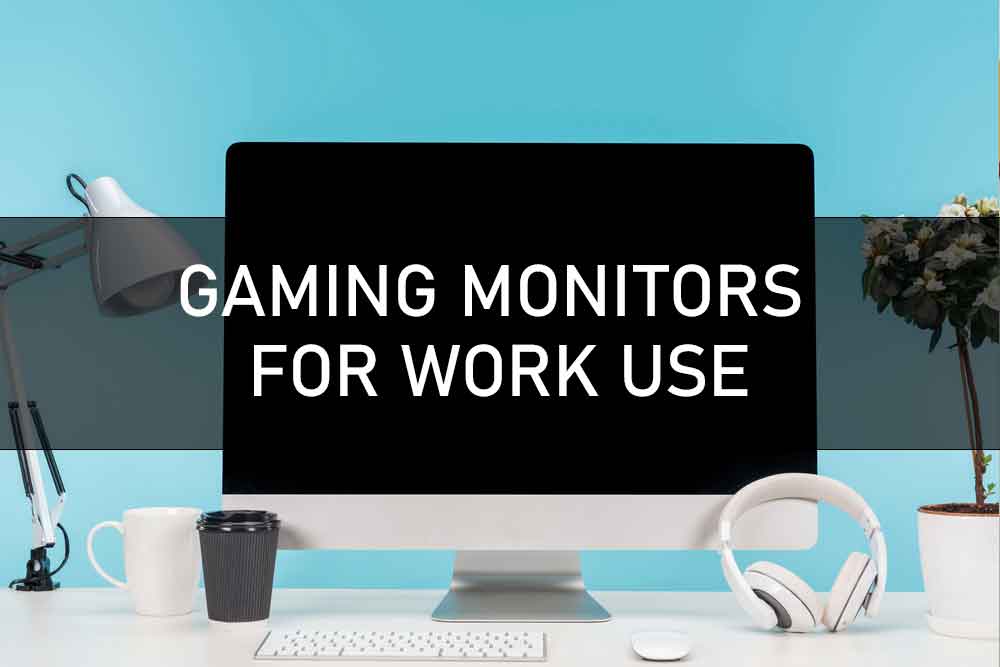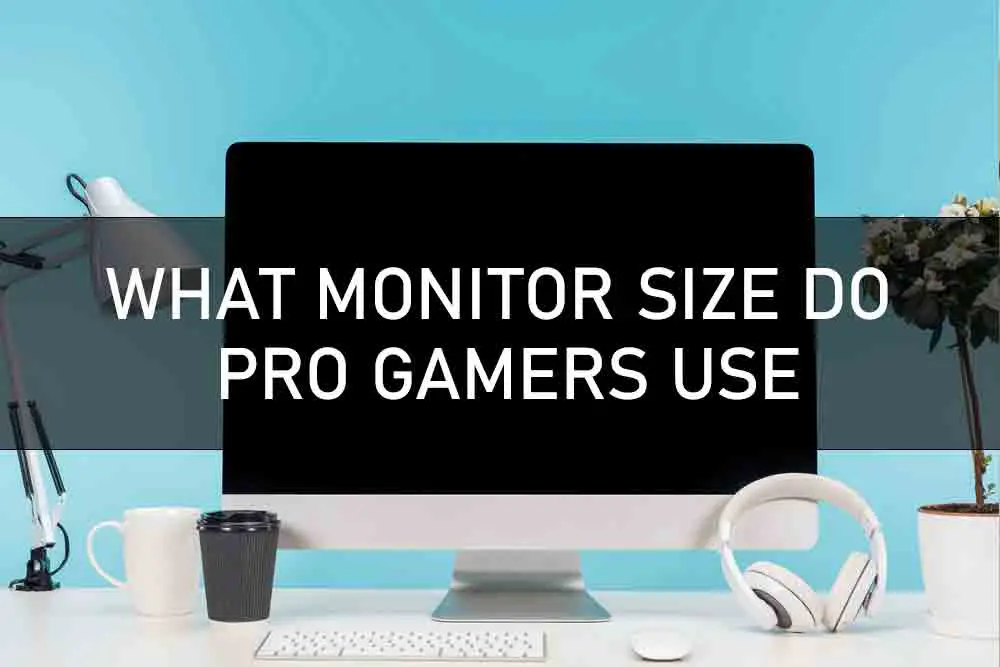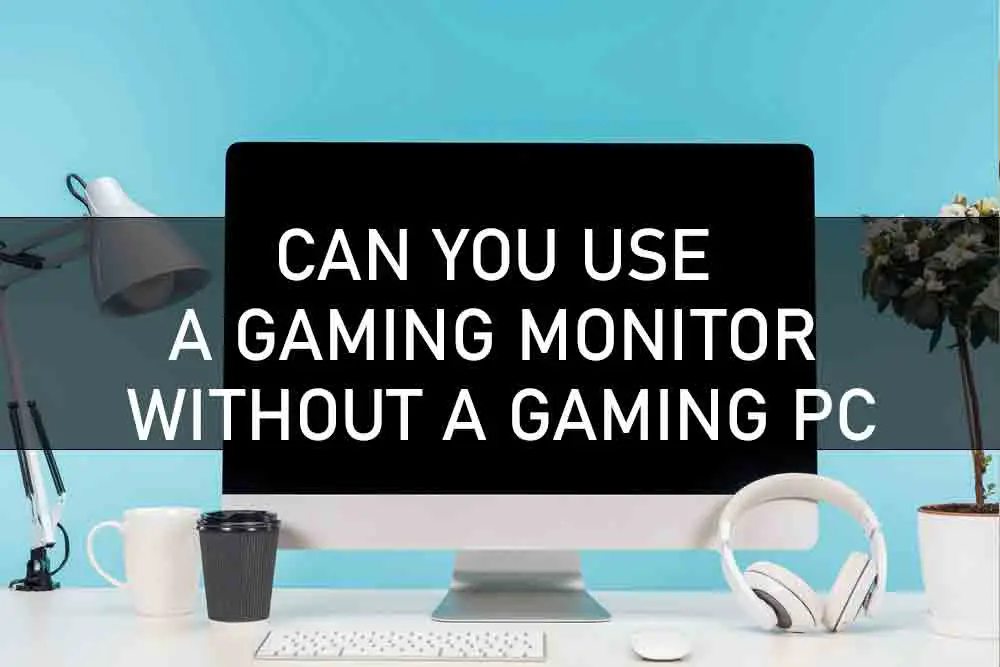Do you like to game when you’re not working? A lot of people do, and there’s nothing wrong with that. In fact, there are some great gaming monitors for work use on the market that can also be used for work purposes.
If you’re looking for a new monitor and aren’t sure if a gaming monitor is right for you, read on. In this blog post, we will discuss the benefits of using a gaming monitor for work and what you need to know before making a purchase.
What Is the Distinction Between a Gaming Monitor and A Regular Computer Display?
A regular monitor is designed for general use, while a gaming monitor is designed for, you guessed it, gaming. Gaming monitors usually have higher refresh rates, which means that the image on the screen is refreshed more often. This results in a smoother image and less input lag, which can be important when you’re playing fast-paced games.
Responsiveness: This is the measure of how quickly the monitor can display an image after it receives a signal from your computer. A higher response time means that there will be less blurring, which can be especially important if you’re playing first-person shooter games.
Resolution: Gaming monitors often have higher resolutions, which means that the image will be more detailed. This can be important for both work and play, as you’ll be able to see more on the screen at once.
Refresh Rate: This is the measure of how often the image on the screen is refreshed. A higher refresh rate means that the image will be smoother and there will be less input lag.
Size: Gaming monitors are often larger than regular monitors, which can be a benefit or a drawback, depending on your needs. If you have a lot of space on your desk, a larger monitor can be great. However, if you’re limited on space, you may want to opt for a smaller one.
Aspect ratio: This is the ratio of the width to the height of the monitor. The most common aspect ratio for gaming monitors is 16:09, but you’ll also find some that are 21:09.
Usage: When it comes to using a gaming monitor for work, you’ll want to consider what you’ll be using it for. If you need a large screen for things like video editing or graphic design, a gaming monitor can be a great option. However, if you just need a basic monitor for things like word processing and internet browsing, a regular monitor will suffice.
Price: Gaming monitors can be more expensive than regular monitors, but you don’t necessarily have to spend a lot of money to get a good one.
Design: Gaming monitors often have more features and better build quality than regular monitors.
Panel: The panel is the actual screen of the monitor.
Types of monitors: TN, IPS, VA
TN (Twisted Nematic): This is the most common type of monitor panel and is typically the cheapest. It has good response times but can suffer from image ghosting.
IPS (In-Plane Switching): This type of panel has better image quality than TN, with wider viewing angles and better color reproduction. However, it can be more expensive.
VA (Vertical Alignment): This type of panel is somewhere in between TN and IPS, with good image quality and decent response times.
Benefits of Using a Gaming Monitor for Work
One benefit of using a gaming monitor for work is that they often have higher resolutions than regular monitors. This means that you’ll be able to see more on the screen at once, which can be helpful when you’re working with multiple programs or files.
Another benefit of gaming monitors is that they often have higher refresh rates. This means that the image on the screen is refreshed more often, resulting in a smoother image and less input lag. This can be important when you’re working with graphics-intensive applications or if you need to respond quickly to things on the screen.
Finally, gaming monitors often have more features and better build quality than regular monitors. This can be helpful if you need a monitor that can do more than just display basic information. For example, some gaming monitors come with built-in speakers, USB ports, and other features that can be helpful when you’re working.
What Is the Difference Between an LCD and an LED Display?
Most gaming monitors use either an LCD or LED display.
LCD (Liquid Crystal Display) is the most popular kind of monitor is the Liquid Crystal Display (LCD) display. They use a backlight to illuminate the pixels on the screen. This backlight can be either CCFL (Cold Cathode Fluorescent Lamp) or LED (Light Emitting Diode).
LED monitors are becoming more common, as they use less power than CCFL monitors and often have a thinner design. However, they can be more expensive.
When it comes to choosing between an LCD and LED monitor, it really comes down to personal preference. If you’re looking for a cheaper option, an LCD monitor is a good choice. However, if you’re looking for a thinner monitor with better image quality, an LED monitor is the way to go.
Are gaming monitors worth it?
This is a difficult question to answer, as it depends on what you need from a monitor. If you’re looking for a higher resolution or refresh rate, then a gaming monitor can be worth the extra cost.
However, if you just need a basic monitor for things like word processing and internet browsing, a regular monitor will suffice. It really comes down to what you need from your monitor and how much you’re willing to spend.
No matter what type of monitor you choose, make sure that it meets your needs and budget. With so many options on the market, there’s sure to be a monitor out there that’s perfect for you.
Is a 24-inch curved monitor worth it?
Curved monitors are becoming more popular, but they’re not for everyone. A curved screen can provide a more immersive experience and can be easier on the eyes. However, they can be more expensive than flat-screen monitors.
If you’re looking for a new monitor, it’s definitely worth considering a curved model. However, if you’re on a budget, a flat-screen monitor will suffice. Ultimately, it comes down to personal preference and what you’re looking to get out of your monitor.
What is the best distance for a 27-inch display?
The best distance for a 27-inch display is about 24 inches. This will give you the most immersive experience and the largest field of view. However, if you’re on a budget, you can get away with a smaller monitor. Ultimately, it comes down to personal preference and what you’re looking to get out of your monitor.
Do curved monitors reduce eye strain?
Curved monitors can reduce eye strain because they allow your eyes to move more naturally. This can be helpful if you spend a lot of time staring at a screen. However, if you don’t mind a little eye strain, a flat-screen monitor will suffice. Ultimately, it comes down to personal preference and what you’re looking to get out of your monitor.








